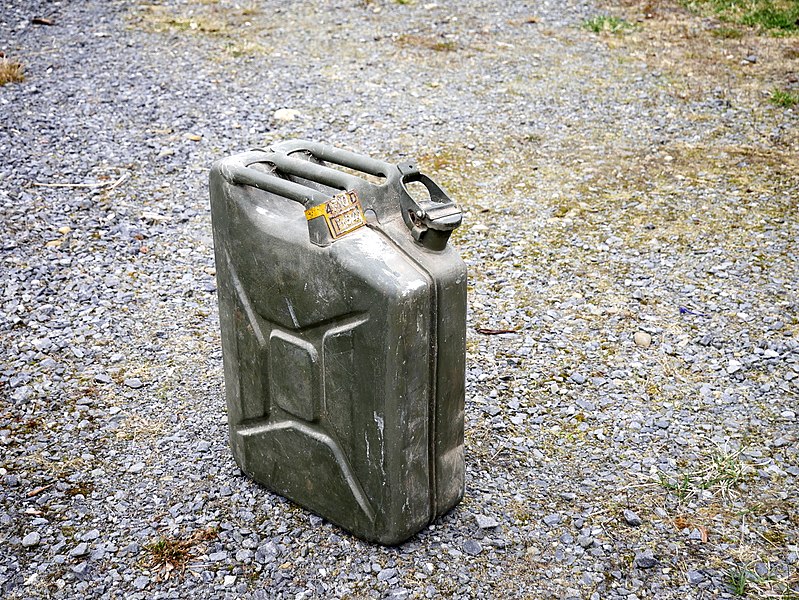
Most Australians have no idea how quickly they’ll be running on empty if our fuel supplies from overseas are cut in a crisis.
For decades, the nation has relied on risky, just-in-time deliveries of the fuel required for transport, industry, police and emergency services, individual motorists, and even the operations of the Australian Defence Force.
A new ASPI special report, Running on empty? A case study of fuel security for civil and military air operations at Darwin airport, released today, describes how this situation is so fraught, and the national reserve so small, that during major military exercises and actual operations (such as the search for the missing Malaysia Airlines flight MH370), fuel stocks reached critically low levels.
In February 2020, Australia held 25, 20 and 22 days of consumption cover for petrol, diesel and jet fuel, respectively. However, the geographical distribution of those holdings across Australia is far from uniform. Most of them are in Brisbane, Sydney, Melbourne, Perth and Adelaide. In those centres, fuel reserve sizes are, for the most part, maintained by just-in-time supply chains. Market forces have led to long-term investment in critical fuel infrastructure, including for storage and distribution, in those locations. Those infrastructure investments have mitigated some of the risk associated with long, exposed supply chains vulnerable to disruption.
The story in Australia’s north, especially in the Northern Territory, is different. There, demand for petrol, diesel and jet fuel is considerably lower than in the more populous southern states. The limited market makes critical investments in fuel storage commercially unviable, so there’s little market competition. Continuity of liquid-fuel supply relies on maintaining regular, scheduled maritime deliveries, while other petroleum products are trucked (yes, trucked) from interstate.
Because of the limited quantities required and the long overland and maritime supply lines, fuel replenishment in the north of Australia takes longer and is more vulnerable to supply-chain delays, making the region significantly less energy secure.
That makes northern Australia a place where the ADF has to deploy with an expeditionary mindset, as it would overseas, rather than being able to operate with deep national supply lines. That’s a poor strategic handicap to inflict on ourselves.
Oil companies argue that their flexible and responsive global supply chains mitigate the impact of limited storage in northern Australia, but that seems overly optimistic, especially given the global supply-chain problems the world has experienced so far during the Covid-19 crisis.
While relying on market forces to drive the development of critical fuel infrastructure may result in commercially efficient outcomes in quiet times, it doesn’t ensure the best strategic investments for Australia and our national security and resilience in times of crisis. The focus on efficiency in normal conditions is resulting in a premium cost for energy in northern Australia that continues to inhibit development and create risks of supply failure.
The liquid-fuel supply chains in the Northern Territory are highly vulnerable to disruption from natural crises and hostile actors.
Our report explores the challenges that have limited supplies of jet fuel supply in the Northern Territory and ways to improve the situation.
The Australian, Northern Territory and US governments support the idea of improved jet-fuel security, but are unwilling to pay for it in either infrastructure investment or increased fuel costs.
Defence wants jet-fuel resilience, but also appears to be unwilling to pay for it, especially if that involves spending more on fuel or on infrastructure that it doesn’t own. The defence organisation has relied heavily on the private sector’s ability to rapidly scale up operations to meet jet-fuel demands.
The civil aviation sector, under stress from the Covid-19 pandemic, is not keen to pay more for fuel or to contribute to the cost of additional storage. For the oil companies, the northern Australian jet-fuel market, commercial and military, is too small to make capital investment attractive.
Certainty of supply needs to be a higher priority now than past policy and investment settings have recognised.
The pandemic has demonstrated that Australia’s model for nation-building infrastructure investment is far too narrowly focused. The notion that such investments should be funded mainly by those who directly benefit from them rather than by all who gain from the increased capacity is reducing the country’s resilience. This is obvious in the north, where Defence so often wears the cost of developing infrastructure that ought to be funded as part of more comprehensive national security or nation-building programs.
The debt-based Northern Australia Infrastructure Facility and user-pays nation-building efforts are unlikely to result in anything more than passing peaks of economic activity. Unfortunately, those arrangements aren’t supporting the kinds of massive nation-building efforts needed in the north, where the federal government should consider ambitious investments.
Private-public partnerships focused on national and regional energy resilience should get priority. Development of condensate plants in the Northern Territory, for example, could meet some of our liquid-fuel requirements, with the added benefit of diversifying supply.
The wake-up call of Covid-19 has given Australia’s governments an unprecedented opportunity, not just to review policy but to check the validity of the assumptions that underpin their thinking.
The pandemic is being rightly considered as a national issue rather than simply a health issue, and the response to it encompasses the population, business and industry, and all tiers of government.
Similarly, the case study presented in our report shows how the policy challenges of the day and national security, defence and nation building are intertwined.

